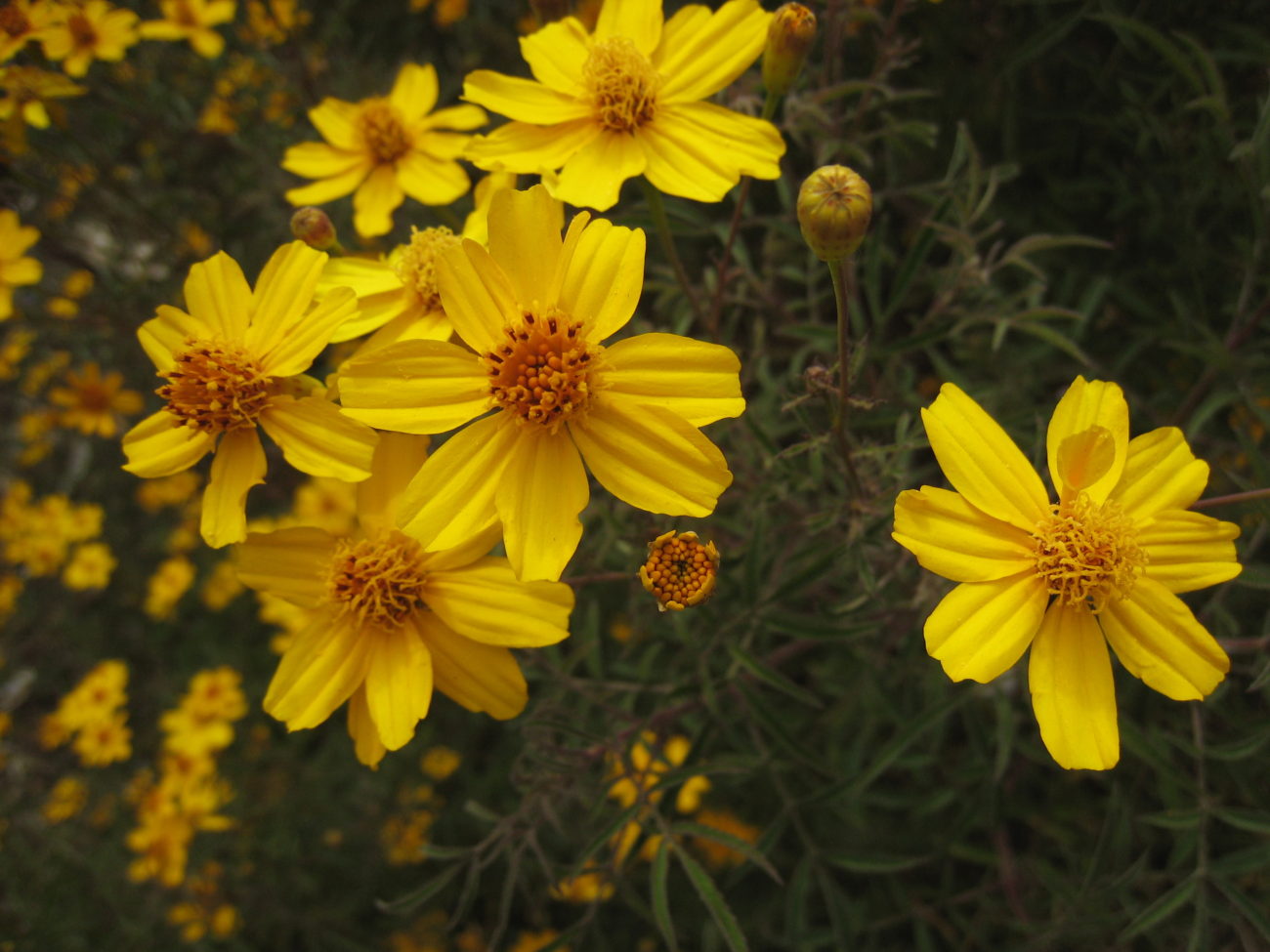
Copper Canyon Daisy, scientifically known as Tagetes lemmonii, is a beautiful and enigmatic plant that captures the attention of garden enthusiasts and botanists alike. This perennial herbaceous plant is native to the canyons of Northwestern Mexico, hence its name. Known for its vibrant yellow flowers and aromatic foliage, the Copper Canyon Daisy adds a dash of color and charm to any garden.
But there is more to this intriguing plant than meets the eye. From its fascinating history to its medicinal properties, there are several enigmatic facts about the Copper Canyon Daisy that make it a subject of fascination. In this article, we will explore 13 intriguing facts about the Copper Canyon Daisy that will deepen your understanding and appreciation for this remarkable plant.
Key Takeaways:
- The Copper Canyon Daisy is a resilient, aromatic, and low-maintenance plant native to the Southwest, attracting pollinators and holding cultural significance for Native American tribes.
- This enigmatic daisy symbolizes creativity, warmth, and resilience, making it a beautiful addition to gardens and landscapes, even in challenging conditions.
A Marvel of the Southwest
The Copper Canyon Daisy is a native plant of the Southwestern United States, particularly thriving in the arid regions of Arizona, New Mexico, and Texas. Its vibrant golden-orange flowers and aromatic foliage make it a standout in the desert landscapes.
A Resilient Survivor
This daisy is well-adapted to flourish in challenging conditions. It is tolerant of drought, heat, and poor soil, making it an excellent choice for xeriscaping or low-maintenance gardens.
Aromatic Delight
The Copper Canyon Daisy emits a delightful fragrance, reminiscent of crushed marigolds. This aromatic quality adds another dimension to its allure, perfuming the air around it when in bloom.
Alluring Foliage
Not only does this plant produce stunning flowers, but its fern-like foliage also contributes to its visual appeal. The finely divided leaves add an elegant and delicate touch to any garden or landscape.
Attracts Pollinators
The bright flowers of the Copper Canyon Daisy attract various pollinators, including bees, butterflies, and hummingbirds. Planting this daisy in your garden can create a buzzing haven for these important creatures.
Medicinal Properties
In Mexican folk medicine, the Copper Canyon Daisy has been used to treat various ailments such as stomachaches, colds, and headaches. The leaves and flowers are often brewed into teas or utilized in herbal remedies.
Native American Uses
Native American tribes in the Southwestern region have employed the Copper Canyon Daisy for medicinal purposes, as well as for ceremonies and rituals. The plant holds cultural significance and is deeply intertwined with their traditions.
Low-Maintenance Beauty
If you’re looking for a plant that requires minimal care and attention, the Copper Canyon Daisy fits the bill. Its hardy nature and ability to thrive in harsh environments make it an ideal choice for those who want a hassle-free garden.
Year-Round Interest
Unlike many other daisies that have a limited blooming period, the Copper Canyon Daisy provides year-round interest with its attractive foliage. Even when not in flower, it adds beauty and texture to the landscape.
Easy Propagation
The Copper Canyon Daisy can be easily propagated through both seeds and cuttings. This accessibility makes it a popular choice for gardeners who want to expand their daisy collection or share the plant’s beauty with others.
Deer-Resistant
One of the benefits of growing the Copper Canyon Daisy is its resistance to deer. If your garden is prone to wildlife browsing, this plant will often be left untouched by grazing animals.
Beautiful Container Plant
Due to its compact size and attractive foliage, the Copper Canyon Daisy makes an excellent choice for container gardening. Placing it in pots or hanging baskets allows you to enjoy its beauty even in limited space or urban environments.
Symbolic Meaning
In the language of flowers, the Copper Canyon Daisy symbolizes creativity, warmth, and resilience. Its vibrant colors and tenacity are seen as representative of the human spirit’s ability to flourish even in challenging circumstances.
Conclusion
In conclusion, Copper Canyon Daisy is an enigmatic and captivating plant that adds beauty and intrigue to any garden or landscape. With its vibrant yellow flowers, aromatic foliage, and unique growth habits, it is sure to be a standout feature in any setting. Not only does Copper Canyon Daisy possess stunning visual appeal, but it also offers a range of benefits, including attracting pollinators and repelling pests.
Whether you are a seasoned gardener or just starting out, incorporating Copper Canyon Daisy into your garden is a fantastic choice. Its low maintenance requirements and ability to thrive in a variety of climates make it an accessible option for all plant enthusiasts. So, don’t wait any longer – embrace the allure of Copper Canyon Daisy and watch your garden flourish with its charm and beauty.
FAQs
Q: How tall does Copper Canyon Daisy grow?
A: Copper Canyon Daisy typically reaches a height of 2 to 3 feet, making it ideal for border planting or as a focal point in a garden.
Q: Does Copper Canyon Daisy require full sunlight?
A: Yes, Copper Canyon Daisy thrives in full sunlight. It requires at least 6 to 8 hours of direct sunlight daily to ensure healthy growth and abundant blooms.
Q: Is Copper Canyon Daisy a perennial or an annual?
A: Copper Canyon Daisy is a perennial plant, which means it will come back year after year. However, in colder regions where frost occurs, it may behave like an annual and die off during winter.
Q: How often should I water Copper Canyon Daisy?
A: Copper Canyon Daisy is drought-tolerant and does not require constant watering. It is best to let the soil dry out slightly between waterings. Water deeply once a week during dry spells.
Q: Can I grow Copper Canyon Daisy in a container?
A: Yes, Copper Canyon Daisy can be grown in a container, provided it has enough space for the roots to spread out. Choose a well-draining potting mix and ensure the container has drainage holes at the bottom.
Q: Does Copper Canyon Daisy attract pollinators?
A: Yes, Copper Canyon Daisy is a magnet for pollinators, such as bees and butterflies. Its bright flowers and sweet fragrance attract these beneficial insects to your garden.
Q: Does Copper Canyon Daisy have any medicinal uses?
A: While Copper Canyon Daisy is primarily grown for its ornamental value, some herbal traditions suggest that it has medicinal properties. It has been used in traditional medicine to treat respiratory ailments and skin conditions.
Copper Canyon Daisy's enchanting qualities make this perennial plant a must-have for any garden enthusiast. Discovering its enigmatic facts has likely piqued your curiosity about other captivating flora. Why not explore the astonishing world of Hepatica, another charming perennial that will leave you spellbound? Uncover the secrets behind these mesmerizing plants and elevate your gardening knowledge to new heights.
Was this page helpful?
Our commitment to delivering trustworthy and engaging content is at the heart of what we do. Each fact on our site is contributed by real users like you, bringing a wealth of diverse insights and information. To ensure the highest standards of accuracy and reliability, our dedicated editors meticulously review each submission. This process guarantees that the facts we share are not only fascinating but also credible. Trust in our commitment to quality and authenticity as you explore and learn with us.


